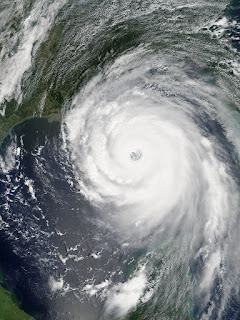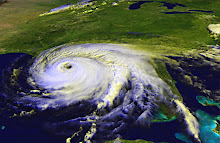The ratings scale that classifies tropical cyclones goes from 1 to 5, with 5 being the most destructive. It was a category 5 storm, with wind gusting up to 180 miles per hour, that slammed into Australia on February 3, 2011. Yasi was the largest and most powerful cyclone to hit that nation in at least a hundred years.
Once over land, the storm began to weaken, but after traveling around 250 miles inland, Yasi was still a category 3. After another 250 miles, the storm finally began to fade. Yet for all its destruction, at this point Yasi is blamed for only one death. It's one of those really tragic, preventable deaths. A 23-year-old man died of carbon monoxide poisoning while running a generator in a closed room. Emergency Services Minister Neil Roberts gave credit for the low death toll to Australians who prepared early and evacuated coastal areas and flood zones.
It's worth comparing this Australian storm to Hurricane Katrina, which devastated coastal Mississippi and Louisiana in 2005. The storms were very similar in size and strength, but Katrina is blamed for the deaths of more than 1,800 people.
|
|
| YASI - 2011 |
KATRINA - 2005 |
| Sustained Winds 155mph
|
Sustained Winds 175mph
|
| Low Pressure 929mbars
|
Low Pressure 902mbars
|
| Size: 372 miles across
|
Size: 397 miles across
|
The impact of a hurricane or cyclone depends on many factors beyond the size of the storm and its wind speed. How fast the storm crosses the area, whether it makes landfall at high tide or low tide, the geography of the region will all affect how much damage is done.
When you find yourself in the path of the storm, you need to be prepared for the worst. In Australia, residents were warned that response would take at least 24 hours. U.S. and state emergency management officials encourage everyone to be able to take care of themselves for the first 72 hours. That means:
- non-perishable food for three days (9 meals plus snacks)
- water for three days (1 gallon per person per day)
- first aid kit with bandages, antiseptic treatments, painkillers and any needed prescription drugs
- battery powered, solar-powered or dynamo-powered radio for news and information
- battery powered, solar-powered or dynamo-powered flashlights
- food and water for pets
- supplies to care for infants, children and the elderly as needed
Thousands of people in Australia are still without power. Homes and livelihoods are destroyed. This is all happening in a regional already devastated by deadly flooding this season.
Disaster can strike anywhere, at any time. Think about your family's disaster plan now and prepare for the future.


